I am; yet what I am none cares or knows;
My friends forsake me like a memory lost;
I am the self-consumer of my woes:
They rise and vanish in oblivious host,
Like shades in love and death’s oblivion lost;
And yet I am, and live with shadows tost
Into the nothingness of scorn and noise,
Into the living sea of waking dreams,
Where there is neither sense of life nor joys,
But the vast shipwreck of my life’s esteems …
From ‘I Am’
Written in The Asylum, Northampton
John Clare (1793-1864)

Blue Christmas is a feast for those for whom the longest night of the year might hold some particular emotional or physical significance; a feast for those for whom darkness is perpetually threatening to overwhelm the light; a feast for those for whom the phrase ‘the dark night of the soul’ holds a special resonance; it is a feast for all those who find themselves unable to celebrate.
It is a feast to welcome in the unwelcomed.
In the last six months the depression that permanently lies under my own skin has become acute again, so this is a feast of particular pertinence to me this year. I am fortunate to be spending today with my parents.
But what of those whose families struggle to support them? What of those whose families reject them, for whatever the reason? What of the families who are missing a beloved part this Advent because support systems were not in place to help when they were most crucially needed? What of those who have been ‘released’ to the ‘care of the community’?
‘Many translations of Luke’s “Magnificat” (Luke 1:46-55) use the wonderful phrase “God has regarded me in my lowliness” (1:48). This French-based word regardez means to look at twice, or look at again, or look at deeply. Mary allows herself to be looked at with God’s deeper and more considered gaze. When we do that, God’s eyes always become more compassionate and merciful. And so do ours if we regard anything.’(Richard Rohr, online meditations)

Blue Christmas is a feast then to be hospitable to myself, to bring all my own grief to the manger and expose myself to the searing Love of God’s gaze; and it is a feast to bring others to this place too, reaching out to those who feel love-less at this time. As Godspace discussed at length in the summer, ‘Hospitality is not to change people, but to offer them space where change can take place … It is … the liberation of fearful hearts.’ (Henri Nouwen, Reaching Out)
Am I offering a space where those who meet me find themselves looked at compassionately, so that the Spirit’s work of loving liberation may begin or continue? Further, is there honesty in my artistic work which reaches out on an emotional register, perhaps creating just even a small moment of emptiness which the Spirit may freely fill in? As Amy Winehouse said so brilliantly ‘Every bad situation is a blues song waiting to happen’: Creativity is God’s integrating response to all grief.

As a photographer I am always considering the interplay of physical light and non-light, and all stages in between. Shade and shadow dance their way through my work, drawing my eye further into an exploration of what is called ‘darkness’, both inside and outside me. (The abstracts that accompany today’s post are all details of IPhone photos that drew me in the further I looked.) I take spiritual comfort from the knowledge that God dwells in the dark. Indeed God deliberately entered into darkness, being born in a stable hewn out of rock; and rose out of a cave, ensuring all may hope to be so transformed. Further, the very name of God we can repeat so blithely at Christmas, Immanuel, is the specific promise that the Living God is with us in the darkness.
I have spent much of this year mulling over Barbara Brown Taylor’s brilliant book Learning to Walk in the Dark. As part of her research she went to sit in the Organ Cave, Virginia, where she picked up a small stone that had gently sparkled next to her. Later it looked ordinary. It is only by turning off all the lights (deliberately deciding to enter a state of darkness) that she realises the paradox: ‘the stone is alive with light, but only in the dark’:
While I am looking for something large, bright and unmissable holy, God slips something small, dark, and apparently negligible in my pocket. How many other treasures have I walked right by because they did not meet my standards?
Those who ‘dwell in darkness’ have much shimmering beauty to share, even in, most particularly in, their, our, my, howls of pain. If only there were ears to listen, and eyes to see, and hands to hold. If only we had the courage to sit in the dark. If only we welcomed the darkness. Then God might indeed be born in us again this day.

 Kate Kennington Steer is a writer and photographer with a deep abiding passion for contemplative photography and spirituality. She writes about these things on her shot at ten paces blog (http://shotattenpaces.blogspot.co.uk).
Kate Kennington Steer is a writer and photographer with a deep abiding passion for contemplative photography and spirituality. She writes about these things on her shot at ten paces blog (http://shotattenpaces.blogspot.co.uk).

Today’s prayers come from John Birch’s new book The Act of Prayer
Scripture:
2 Samuel 7:1-11, 16: Psalm 89:1-4, 19-26; Luke 1:46-55; Romans 16:25-27;
Opening Prayer:
Through our worship today,
bring us nearer,
in our Advent journeying,
to Bethlehem’s stable,
expectation and celebration.
Adoration
We will sing of your love for ever,
and proclaim your faithfulness to every generation,
for your word is dependable, your promises secure.
A child is to be born within one nation but for all nations.
Our God will be revealed,
the Son of David born in humility.
Love will come down to earth
as servant-king and vulnerable.
We will sing of your love for ever,
and proclaim your faithfulness to every generation,
for by grace incomparable our salvation is here.
Confession
As we celebrate the gift of love within a manger
and remember that Jesus Christ came for our salvation,
forgive us,
if our hearts are cold and faith is hard to find.
Bring us back to the mother,
Mary, who bore the child who would be king.
Remind us of her gentleness,
her faithfulness when asked to be
the blessed one through whom
the divine would walk upon this earth.
Oh, that we should demonstrate such faith!
Thanksgiving
When you come to us
with gentle whisper or mighty wind,
and ask what seems impossible to human minds,
as you did with Mary,
may our response not be to hesitate,
make excuses or run away.
but to echo instead those trusting and beautiful words,
‘I am the Lord’s servant;
may your word be fulfilled in me.’
For Mary’s faithfulness
and her life of service
we thank you, Lord.
Today’s post in the series Welcome to the Manger Who Will You Invite? is contributed by Lynne Baab who has written many books and articles on Christian spiritual practices. Her latest book is The Power of Listening. Visit Lynne’s website and blog for numerous articles she’s written on spiritual practices.
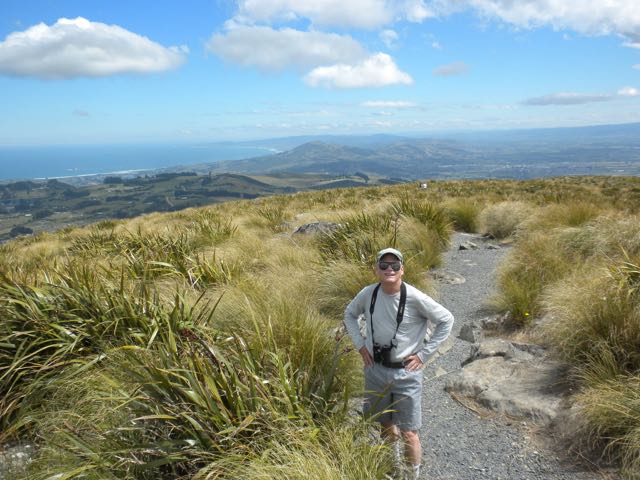
The author’s husband on a Christmas hike in Dunedin, New Zealand, on the top of Flagstaff, 666 meters or 2185 feet
Who do I want to bring to the manger this Christmas? Who might otherwise be excluded or ignored? Here’s my somewhat odd answer: my body.
Of course, my body isn’t actually separate from myself, but sometimes it feels like it is. Part of that comes from the Christian emphasis on spiritual things. Our redemption in Christ often seems to be more focused on our souls and spirits rather than on our bodies. Another part of my sense of separation from my body comes from my struggles with weight my whole life, which have often contributed to a view of my body as a bit of an enemy rather than as a beloved part of myself.
My conviction that Advent and Christmas are a good time to focus on the significance of our bodies in God’s grand story comes from living in the Southern Hemisphere for the past few years. This Advent is my seventh in New Zealand.
I come from Seattle, where Advent evenings are pitch dark before 5 pm. Here in Dunedin during December, there is still light in the sky at 10 pm. In New Zealand, the red and green colors of Christmas take new forms: strawberries, local zucchini and red peppers cooked together, and lettuce from our garden paired with bright red tomatoes. These are healthy, light foods. Favorite activities of New Zealanders during Advent and Christmas include walking on beaches and hiking in the mountains, sailing and surfing, gardening and strolling among the roses in the Botanic Garden. Here, our physical bodies are not smothered in heavy sweaters and down coats during Advent and Christmas. Bodies seem alive and real this time of year, nurtured by healthy food and lots of physical activity.
At first, a Christmas season full of long, sunny days seemed very weird indeed. I know people in Florida experience sunshine at Christmas, but I seldom had. I missed the candles in the dark evenings, and all that imagery of Jesus as the light shining in the darkness. I missed that sense of hunkering down inside with delicious smells of cooking in the background and green and red decorations in the house. Now the red and green show up in healthy foods, and we focus on the beauty of the light outside and all the growing things we can see from our window even in the evening.
I have come to see the new pattern as a gift, a part of my growth in bringing my whole self, including my body, to Christ in worship and submission. When we think of the incarnation, we remember that Jesus took on flesh in order to redeem us. He didn’t want to redeem just our souls and spirits. Our bodies are an integral part of our selves, and therefore an integral part of our redemption. I celebrate that reality much more profoundly at Advent in the Southern Hemisphere than I ever did up north.
As I walk among the December roses, I remember that God made those gorgeous blooms, just like God made my body, soul and spirit. At this time of celebrating the incarnation, remembering the beauty of creation helps remind me why the incarnation was necessary. Truly I long to return to the purity of what God made, before all that beauty was marred by sin. Truly my whole self – body, soul and spirit – is broken and needs redemption in Jesus.
Yes, this year I want to bring my body to the manger, to bow in worship and surrender, giving my whole self to Jesus.
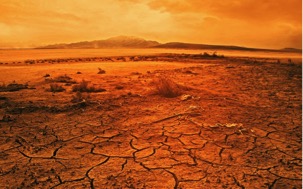 The beginning of the good news of Jesus Christ, the Son of God.
The beginning of the good news of Jesus Christ, the Son of God.
As it is written in the prophet Isaiah,
“See, I am sending my messenger ahead of you,
who will prepare your way;
the voice of one crying out in the wilderness:
‘Prepare the way of the Lord,
make his paths straight,’” (Mark 1:1-3, NRSV).
“The beginning” did you hear those words? Something’s about to start here. Listen for it. What are we beginning? “The good news of Jesus Christ, the Son of God.” No genealogy or baby in a manger in Mark. Mark is ready to lay out the conclusion you will surely come to if you keep reading. Mark is already in the middle of a conversation and expects that we’ll keep up.
He starts with Isaiah, which is a bit like starting a story about a political candidate with a line from the national anthem. Mark selects his passage with care: he does not start in the first stanza with that familiar line “Comfort, O comfort my people.” He is not interested in comfort. Comfort doesn’t call for a messiah. We’re starting somewhere else – at the beginning.
“See,” it says, and all good prophets start with that same word. Look. Look! Do you see what God is doing? Can you use your eyes and notice? Whether or not it’s obvious to you—or even perceptible—God is moving. “See… I am sending my messenger ahead of you, who will prepare your way. The voice of one crying out in the wilderness.” The wilderness, though, is not the tidy, legally protected vestige of another world set aside for our enjoyment. It is a place abandoned or ravaged, a place where no people want to go, or a place, perhaps, where no people are left. It is cleared out. Emptied. It is what lies ahead on our paths. The beginning of the good news.
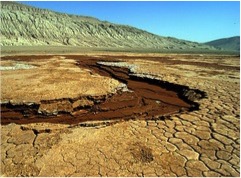 This voice cries out, Isaiah says. Cries out for help, to be noticed, because all other resources are exhausted. There is nothing left but to plead with God. This is the messenger who has gone on ahead. This is the path, the way that is being prepared. A voice, crying out in the wilderness. The beginning of the good news.
This voice cries out, Isaiah says. Cries out for help, to be noticed, because all other resources are exhausted. There is nothing left but to plead with God. This is the messenger who has gone on ahead. This is the path, the way that is being prepared. A voice, crying out in the wilderness. The beginning of the good news.
Isaiah’s crying voice sets the stage for a poetic vision that is both terrifying and wonderful, a flowing, paradoxical description of what God intends for Israel, of what it may mean to enter into covenant with a loving God who is fiercely devoted to justice and equity. The voice cries out to prepare the way, to make a straight path. As Isaiah says: the mountains will be brought down, the valleys will be raised up, the rough places will be smoothed over. This is the beginning.
Isaiah—the prophet, the tribal poet—never thought in English. These words that we hear: mountains, valleys, straight, smooth; they have poetry in them, an abundance of meaning. In Hebrew, a mountain evokes something similar to what we’re accustomed: a high, inaccessible place of much beauty and danger. In English, we might call a series of difficult circumstances a ‘rough patch,’ but Isaiah has a different set of tools: a rough place is a deceiver, and smoothing it over makes it righteous. The crying voice in the abandoned place is not simply seeking an easy level path for God to walk on. “Prepare,” it says, and the Hebrew implies something akin to repentance: clear away what blocks you – turn and look. It’s about to begin. A voice crying in the wilderness.
Those mountains in the distance, the high places of self-discovery, kindness, generosity, love: they have been so beautiful to keep in the distance, high, inspiring and really hard to get to. The way of the Lord requires they be not just brought low – the English only begins to hint at the abasement intended here. Likewise, the valleys, the places where we run and hide, where we feel protected because we are unseen, they will be brought up, meaning: forgiven, carried, dignified. The beginning.
When Mark starts this gospel with Isaiah’s words, he intends the reader to call to mind the whole. But he stops so short! Make the paths straight. Straight, a word we all know. Straight as an arrow. Straighten up. Set the record straight. Mark loves this Greek word, euthys. It’s all over his gospel. Here it shows us a Jesus who moves with lightning speed from one episode to another. He goes straight to this and straight to that. The translation to English is ‘immediately.’ Mark sets a tone here. A voice crying in the wilderness. The beginning: immediately. God’s already started.
So what is God up to? What’s this great big good news Mark wants us to know? God’s up to something big, and it’s happening now. What Mark wants us to know is, are you ready? If you’re still holding on to the noise of your life, if your days are cluttered with the kind of busy that pleasantly distracts you from the fact that you’re always tripping over your own spiritual furniture, then you’re about to miss what God is beginning right in your midst. There is a voice, crying out in the wilderness.
That thing that God is beginning – it’s what God is always doing, right from the start. Right to the end. God is calling. God is creating with words a reality in which we can, if we so choose, be free to live every moment unencumbered by the mistakes and wounds of the past, free enough to let the love that makes up every molecule of the universe flow through our lives and bring us blessing, bring blessing to those around us, and heal the world. That’s what God is up to. that voice crying in the wilderness knows full well that God is leading us to a place of comfort, to a place of joy and fulfillment, but until we get there it will feel like the valley of the shadow of death. Because there is pain and wounds. We have made mistakes. It’s not so easy to let go of those. What’s worse: there will be more. So we build our mountains because we know we’ll never be those shining beautiful virtues. We dredge out our valleys so we can go and hide and feel safe from the piercing gaze of the one who knows what glory is really hidden inside each of us. Do you hear the voice?
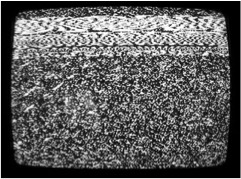 Your wilderness is calling. That uncluttered space of your deepest self, far below the protective scabs and defensive armor that life piles on all of us. There is a voice there, a desperate one with nothing left but to cry out. What keeps us from hearing? A therapist I know once compared anxiety to the static on a radio station: when there’s too much, even what little we can hear is wildly distorted. Maybe you have anxiety. Maybe the holidays leave you on edge, your body remembering times past when this season was associated with unhappy memories. Maybe the money is tight. Every price tag and sales pitch feels like an assault. Are the days at work or nights at home so exhausting that any distraction is worth the price? Can you turn the noise down for a moment and listen? Can you find your way into that empty space, and join in the preparation?
Your wilderness is calling. That uncluttered space of your deepest self, far below the protective scabs and defensive armor that life piles on all of us. There is a voice there, a desperate one with nothing left but to cry out. What keeps us from hearing? A therapist I know once compared anxiety to the static on a radio station: when there’s too much, even what little we can hear is wildly distorted. Maybe you have anxiety. Maybe the holidays leave you on edge, your body remembering times past when this season was associated with unhappy memories. Maybe the money is tight. Every price tag and sales pitch feels like an assault. Are the days at work or nights at home so exhausting that any distraction is worth the price? Can you turn the noise down for a moment and listen? Can you find your way into that empty space, and join in the preparation?
Mark’s gospel doesn’t have the kind of Christmas we’re accustomed to. We have to sneak over to Luke and Matthew for a stable, animals, wise men and shepherds. Mark takes us somewhere different. Before we can see that little baby, that tiny insignificant event that will shake the cosmos, we have to clear out space, knock down mountains and fill in valleys, turn down the volume of life and just listen. There is a voice there, crying out. Prepare. Make way. God is about to do something. The beginning.
Michael serves as a priest at St. Mark’s Episcopal Cathedral in Seattle. When not creating kitchen chaos in his quest for gastronomic bliss, he enjoys spending time in nature with his wife and two young children. He is co-author of Boats Without Oars: Ancient-Future Evangelism, An American Road Trip and Collected Stories from the Episcopal Church. More of his writing may be found at www.carroccinocollective.com.
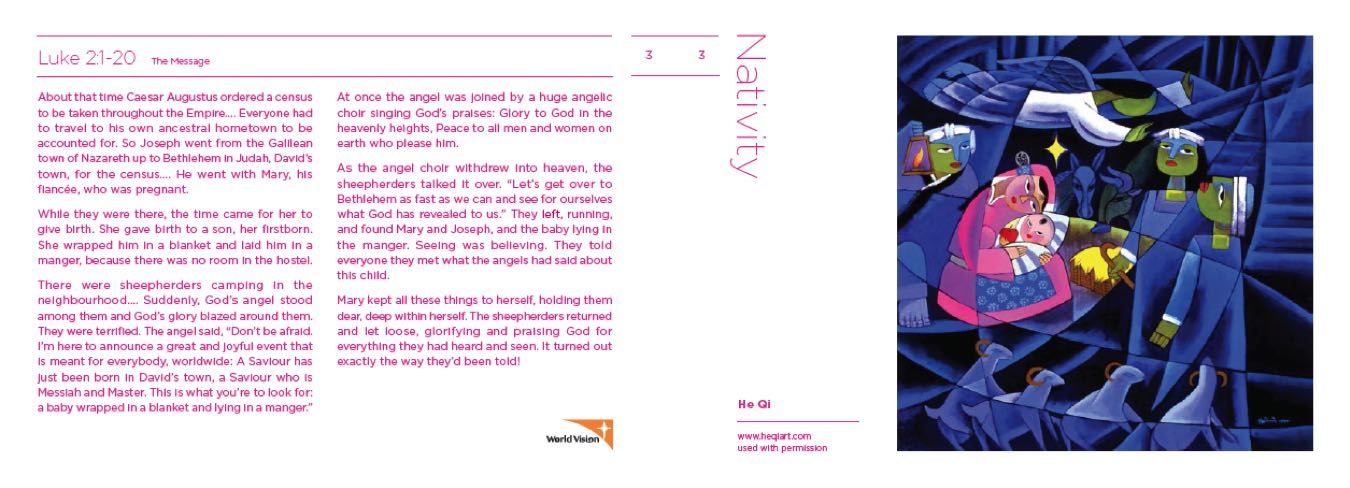
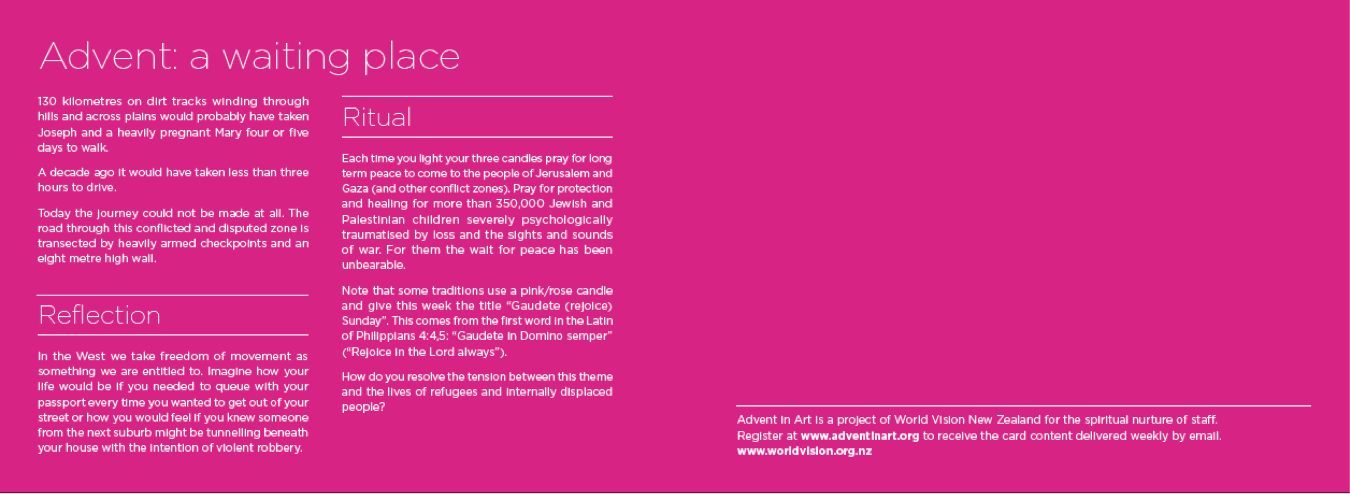

Come to the manger all you sweet wanderers with disconnected memories and synapses that do not quite link up any more, like frayed cables lashing blindly in the wind. Come and worship the one newly born from and to wholeness. Where your ends do not meet he will find you, somewhere in the middle. All will come flooding back to your heart, if not your mind. Remembering is now done in the stillness of your soul and the integrity of ideas does not matter here.
Come and sit by the crib, all you dear and desperate ones, clinging to difficult pasts or fragments of yourself because it is all you have to go on in the jigsaw of life. The unknowing and the heart-breaking urgency to belong somewhere, anywhere, will come to rest here. This place is your storm harbour, and your safety. Find your identity here, sat on sacred ground, be it cold and stony. He knows who you are, even when you do not.
Come, blessed hearts, to the stable, all you anxious and traumatised, troubled and sobbing. Here is the Prince of your Peace, bring him all you have, the flashbacks and the anger, the deep desire to forgive and forget the terrible. The longing to have a future free from angst. Come weeping and gnashing and find your soothing lullaby here in a cradle of heaven’s heart.
Come near, you beloved, to the soft golden straw, you unsure of your own senses, hearing the voices and the commands of harm and horror. The fog of uncertainty surrounds and taints all things and the promptings are powerful, but here in the love-light you will see the mist clearly dissipate, hear the dark declarations silenced this quiet night. For the Good Shepherd sleeps and softly gurgles here, and you will know his voice as it quells those other tides.
Come now, the cherished, drawn to the light of the candles, you claimed forgotten, clenched and exhausted, abandoned by sleep and joy, left dwelling in dark clouds and unable to feel your way to any happy thought. Despair and disappointment have long been your companions, their constancy too strong to fight and too hard to bear. This is the home of hope, this small and perfect beginning. The glow can start again for us all, the flame rekindled.
Come all you treasured edge-dwellers, to Bethlehem, you precious peerers around corners, you unworthy ones who cringe and cower if someone notices your difference, your bare brokenness. Do not cover your eyes here or hide your shape that appears so unseemly to your skewed vision. Here is the reflection of your true self that is able to look at its image and smile. This tiny form contains you as beloved and acceptance is yours to receive.
We all come, we scarred and smashed, we broken and battered, we weary and wounded. We adored. There is miraculously room for all to gaze and know, in one awestruck moment of seeing, that this baby boy is our centre, the middle of all things, the stone dropped in the centre of the ocean of the universe, rippling out in waves of wonder that will captivate us and draw us in to love.
© Keren Dibbens-Wyatt 2014
Keren Dibbens-Wyatt is a writer with a passion for prayer, church unity and the edification of women. She finds her joy in God’s colours, creatures and stories and attempts to share it with others through her work.
Links: website http://www.stillwatersministries.co.uk/
Blogs: http://gardenofgodsheart.wordpress.com
http://jellyjots.blogspot.co.uk/
Or connect with Keren on facebook https://www.facebook.com/KerenDibbensWyatt
You can download Keren’s free ebook “Christian Prayers for the World” on ibooks, Lulu or Kindle. Christian Prayers for the World
The Text This Week usually tops my list of go-to sites for Christmas resources. Great links to pageant ideas and worship services and I really feel I do not need to add more ideas than you can find here.
However, I just came across Rev. Mindi Welton-Mitchell’s website: Rev-o-lution with its rich resources for Advent and Christmas including some good (and simple) downloadable ideas for children’s pageants especially good for small churches.
Enjoy these Prayers for the 12 days of Christmas
Though not specifically about Christmas I also heartily recommend CNN’s Best Space Photos for 2022. It is an inspirational collection of photos that is worth meditating on as we consider the story of Christ.
Slide Show to go with the Lectionary Readings
The Nativity in Art from the National Gallery in London (slides)
The Christmas Story in the Art of the National Gallery in DC (long video)
The Christmas Story in Student Art from Australia (slides)
Story of Christmas told in Sand by Artist Joe Castillio (short video)
Nativity art from around the World
If you are looking for a delightful video to show in an informal Christmas service, I highly recommend this one from St Paul’s Church in Auckland, New Zealand.
And don’t miss this beautiful reading of the nativity story with original music by Malcolm Dunn.
And if you are celebrating alone this year, you may like to listen to this recording of the Nine Lessons and Carols from King’s College Cambridge.
Multicultural Resources
- Watch Black Nativity
- Black Christmas Music Playlist
- 24 Multicultural Children’s books about Christmas
- The Ultimate List of Diverse Children’s Christmas books
And a few suggestions of my own for celebrating the twelve days of Christmas:
Christmas Eve Prayer Walk
On Christmas Eve walk around your neighbourhood with your family and friends. Imagine that you are Mary and Joseph looking for a place to stay until their baby is born. Pray for the people in the houses you pass that they will open their hearts and provide a place of welcome for the Christ child this Christmas. Pray the following prayer of blessing in front of each house.
Lord encircle this house with your presence
Fill it with your peace
Surround it with your love
Protect it with your strength
Lord encircle this home
Fill it with your joy
Surround it with your hope
Protect it with your grace
Lord encircle this home
Fill it with hospitality to reach the lost
Surround it with generosity to touch the poor
Protect it with truth to guide all lives
Lord encircle this house with your presence
You may like to combine this prayer walk with a time of carol singing around the neighborhood. Or perhaps you could bake a batch of your favorite cookies to give to each of your neighbors and deliver them on Christmas Eve. Pause before you enter each house and pray for the people that live there. Or, pray for each family while you are baking the cookies, enclose a special prayer with each plate. Here is a suggestion:
God bless your household
With love to surround you,
With grace to uphold you
With life to sustain you
God bless you this year
Guide your paths to what is right
Your thoughts to what is true
Your minds to what is good
Each day in every way
May you be kept in the shadow of God’s wings.
Celebrating the Twelve Days of Christmas
Sit down with your family the day after Christmas – read the story of the angels appearing to the shepherds in the fields. To me this is one of the most incredible stories in the Bible. Imagine it. This event was so incredible that even the angels were excited. In fact, they were so excited that they could not contain themselves. They had to break into the earthly realm with shouts of joy proclaiming that the promised Messiah had come to live amongst us.
Discuss your reactions to this story and to the whole account of the birth of Christ. When you read through the gospel account how do you feel? What is your earliest memory of when Christ first appeared to you? Share how you felt at that time and talk about the difference that Christ’s presence has made in your life. Then ask yourselves: What most excites you today about the presence of Christ in your life? How does his presence impact your life? Next discuss ways that you could share the joy of Christmas with others during the following days. You might like to write down one suggestion for each of the 12 days of Christmas that could extend the joy of the season to others
Here are some suggestions. Do you know people that are alone at this season? Take them out for a meal or invite them to go skiing or if you are in the southern hemisphere, swimming with you. Share with them your reasons for continuing to celebrate the joy of Christmas beyond December 25th. Do you know people who are disabled? Take them for a drive around your neighbourhood to enjoy the Christmas lights. Do you have friends, acquaintances or family your rarely speak to? Phone one person each evening during Christmas to share your joy with them.
And let me know your suggestions so that we can put together an expanded list next year. How do you celebrate the 12 days of Christmas?
This is part of a series on Christmas/Advent resources.
- Advent Activities for Families and Kids for 2020
- Helping Kids Give Back This Christmas
- Celebrate With Simplicity This Christmas
- Advent/Christmas Music from a Rich Array of Traditions
- Getting Ready for Advent/Christmas Worship Resources for the Season
- Choosing Your Scripture Readings for the Coming Year
- Who Will You Invite to the Manger?
- Advent Candle Light Liturgy
- What On Earth Are The O Antiphons
Resources from Godspace for Advent and Christmas
Godspace has a variety of resources available for celebrating this season.
- NEW DEVOTIONAL! Lean Towards the Light this Advent & Christmas + Advent Cards Bundle compiled by Christine Sine and Lisa DeRosa
- A Journey Toward Home: Soul Travel For Advent to Lent compiled by Kristin Carroccino and Christine Sine
- Waiting for the Light: An Advent Devotional compiled by Ricci Kilmer, Susan Wade and Christine Sine
- Prayer Cards – more than Christmas gifts. These have been used for daily devotions, grief counselling, small groups and congregational prayers.
Check out the entire resource list here for more ideas for Advent and Christmas.
Godspace has a number of Advent resources available for both free download and purchase. Visit our store.
As an Amazon Associate, I receive a small amount for purchases made through appropriate links.
Thank you for supporting Godspace in this way.
When referencing or quoting Godspace Light, please be sure to include the Author (Christine Sine unless otherwise noted), the Title of the article or resource, the Source link where appropriate, and ©Godspacelight.com. Thank you!
